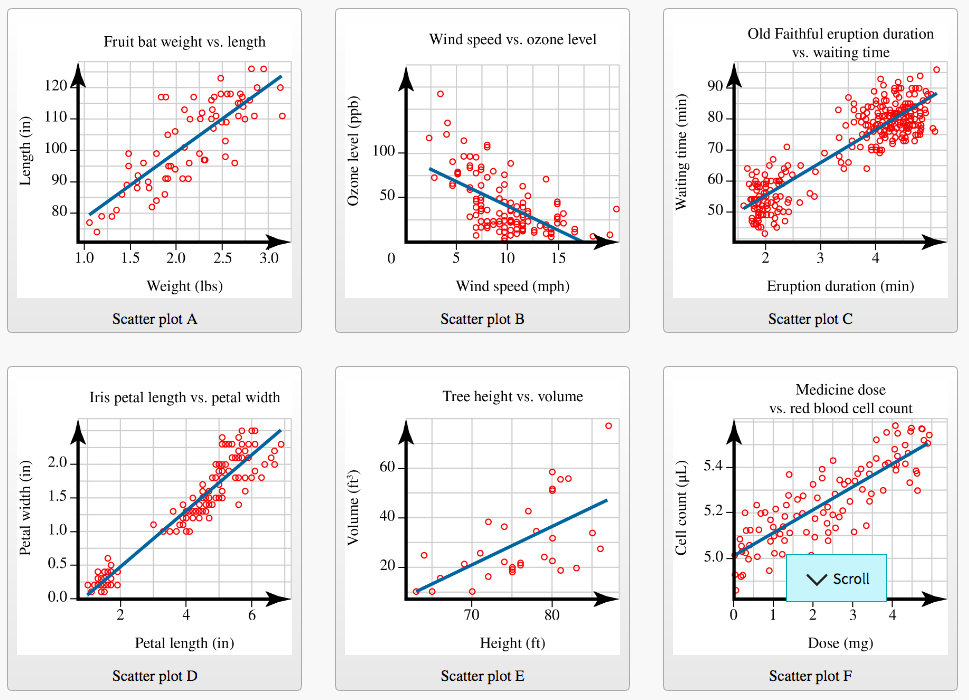

An individual observation on each of the variables may be perfectly reasonable on its own but appear as an outlier when plotted on a scatter plot. If the association is nonlinear, it is often worth trying to transform the data to make the relationship linear as there are more statistics for analyzing linear relationships and their interpretation is easier thanĪn observation that appears detached from the bulk of observations may be an outlier requiring further investigation. The wider and more round it is, the more the variables are uncorrelated. The narrower the ellipse, the greater the correlation between the variables. In this example, each dot shows one persons weight versus their height. If the association is a linear relationship, a bivariate normal density ellipse summarizes the correlation between variables. A Scatter (XY) Plot has points that show the relationship between two sets of data. Notice that starting with the most negative values of X, as X increases, Y at first decreases then as X continues to increase, Y increases. Using the corresponding measurements of variable1 and variable2 in DATA, plot variable1. Because the graph isn't a straight line, the relationship between X and Y is nonlinear. Scatter plots are used to discover relationships between variables. Each point on the graph represents a single ( X, Y) pair. The type of relationship determines the statistical measures and tests of association that are appropriate. Scatter plot of a nonlinear relationship. Other relationships may be nonlinear or non-monotonic. There are three types of correlation: positive. When a constantly increasing or decreasing nonlinear function describes the relationship, the association is monotonic. With scatter plots we often talk about how the variables relate to each other. When a straight line describes the relationship between the variables, the association is linear. If there is no pattern, the association is zero. If one variable tends to increase as the other decreases, the association is negative. The relationship between the two variables is called. The following video explains dependent and independent variables in more detail.If the variables tend to increase and decrease together, the association is positive. Scatter diagrams have one very specific purpose they show how one variable is affected by another. Relationship: Dependent and Independent variables The following video provides an example of identifying the strength, form and direction of relationships.
#Scatter plot relationships how to
The following video explains how to identify the strength, form and direction of relationships in scatterplots. Relationship: Strength, form and direction The following video explains how to interpret scatterplots, and goes through each of the above dot points! Linear Relationship: A linear relationship between variables is a relationship whose scatter plot resembles a straight line. The independent and dependent variables.The strength of an association (strong, moderate or weak).The direction of an association (positive or negative).The basic function is plot(x, y), where x and y are numeric vectors denoting the (x,y) points to plot. Forms of an association (linear and non-linear form) There are many ways to create a scatterplot in R.The following post will explain reading a scatterplot and interpreting relationships in the HSC Standard Math course using : When the dots are very close together in a line, they tend to have a close relationship, when they are further apart and almost ‘random’ in their placement, there is either little or no relationship. Each set of data presented in a scatterplot shows a relationship of some sort.


 0 kommentar(er)
0 kommentar(er)
